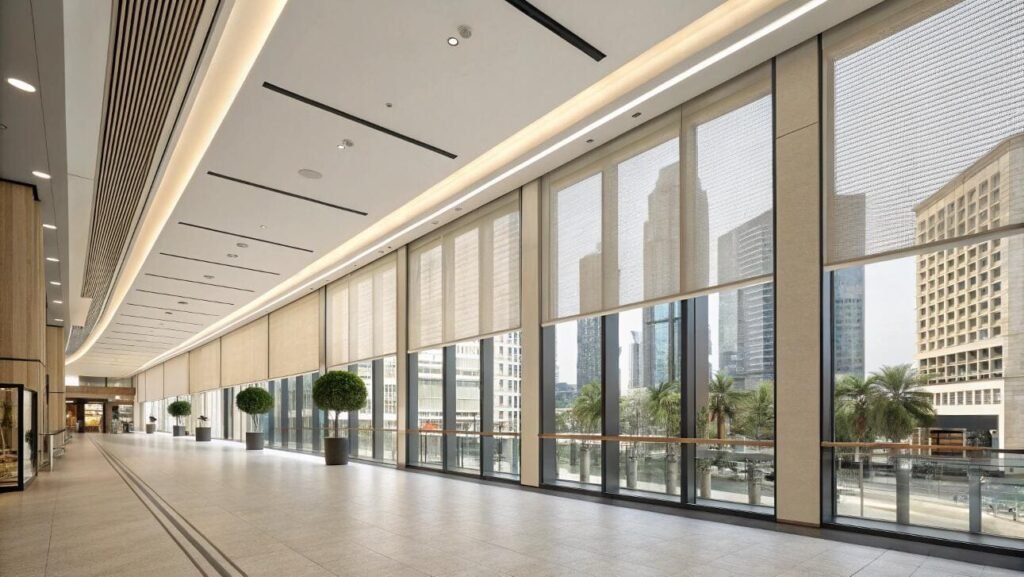Choosing the wrong blinds for a commercial project wastes money and fails compliance. Get it right by matching the solution to the building's specific functional and safety needs.
To choose window treatments for a building, you must prioritize its primary function. For offices, focus on energy efficiency[^1]; for hotels, fire retardancy[^2] is key; and for healthcare, hygiene standards are non-negotiable. Matching the blind to the building’s use ensures performance and safety.
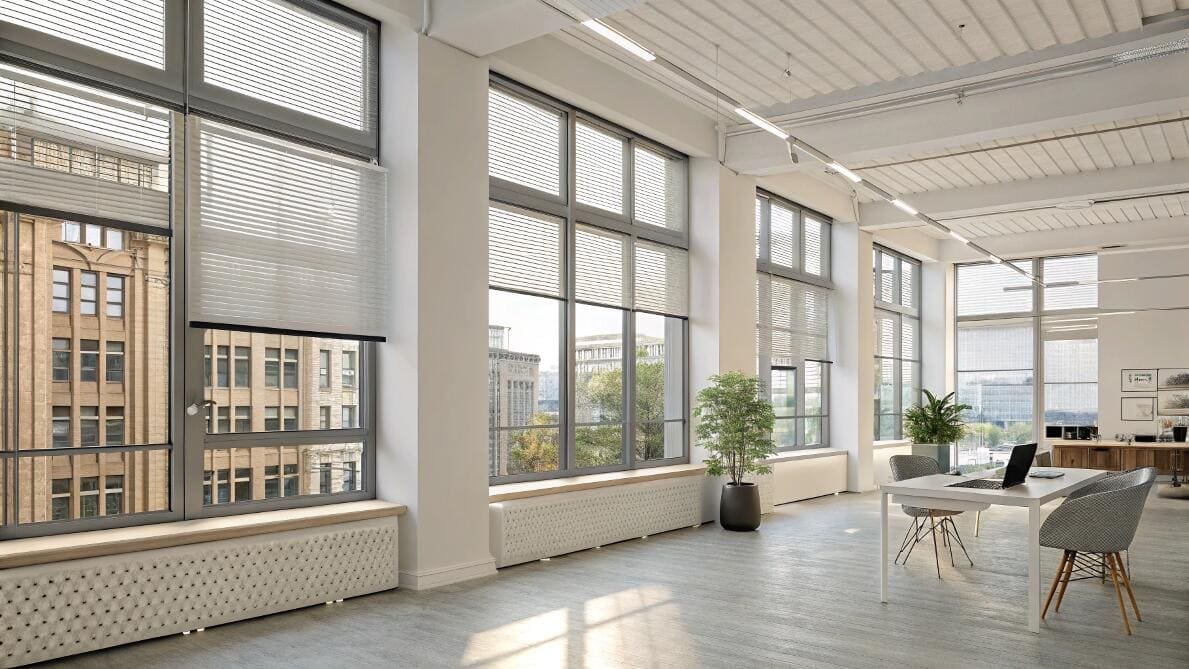
As a project contractor or designer, you know that selecting blinds goes far beyond just color and style. The stakes are higher in commercial spaces. You're dealing with building codes, user comfort, energy bills, and maintenance teams. I’ve spent years helping partners like you navigate these challenges. Let’s break down how to choose the right solution for different building types, based on my direct experience in the field.
How do you decide on the right window treatments for a commercial project?
Project specifications can be overwhelming with countless options. A wrong choice leads to client dissatisfaction[^3]. I use a simple framework to narrow down the best choices every single time.
Decide on window treatments by analyzing three core factors: Function (light control[^4], privacy[^5], insulation[^6]), Aesthetics (style, color, texture), and Budget. For large projects, also consider consistency to create a unified look while addressing the unique needs of different rooms.
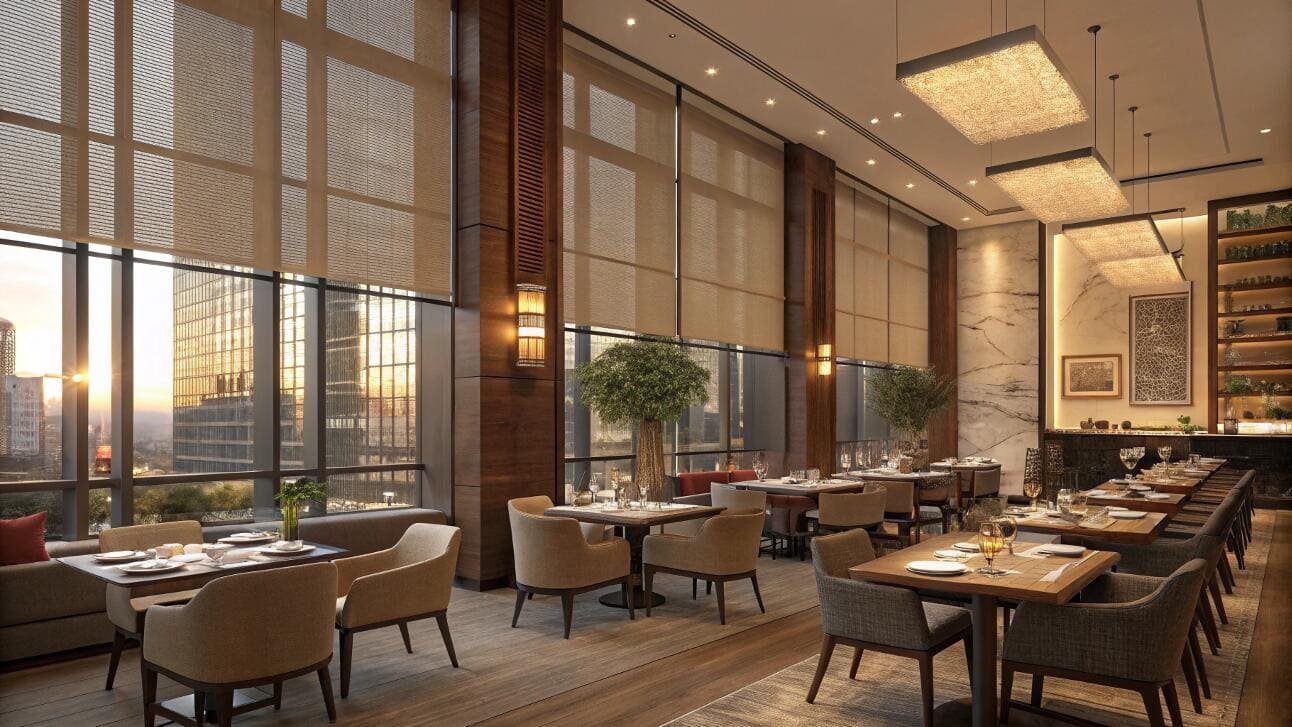
I always start with function. What does this window need to do? Does it need to block glare in an office, provide total blackout in a hotel room, or offer insulation? Once the functional needs are clear, we can look at aesthetics[^7]. Timeless options like roller shades or cellular shades often work best because they offer a clean look that won't feel dated in a few years. The goal is to find a style that complements the building's architecture without overpowering it. Finally, consistency matters. You might use the same type of shade throughout a building for a cohesive feel, but vary the fabric's properties. For instance, you could use blackout fabric in bedrooms and light-filtering fabric in lobbies. This approach balances a unified design with room-specific performance, which is key for a professional result.
Which shade systems outperform in Class-A offices for light control and energy savings?
Office energy costs are climbing, and employee comfort is suffering from harsh glare. Traditional blinds often fail to solve both problems. There are specific systems designed for modern office performance.
For Class-A offices, honeycomb (cellular) shades are excellent for energy savings, reducing HVAC loads by up to 15%. Motorized roller shades with solar screen fabrics are also top performers, offering superb glare control, a clean aesthetic, and integration with smart building systems.
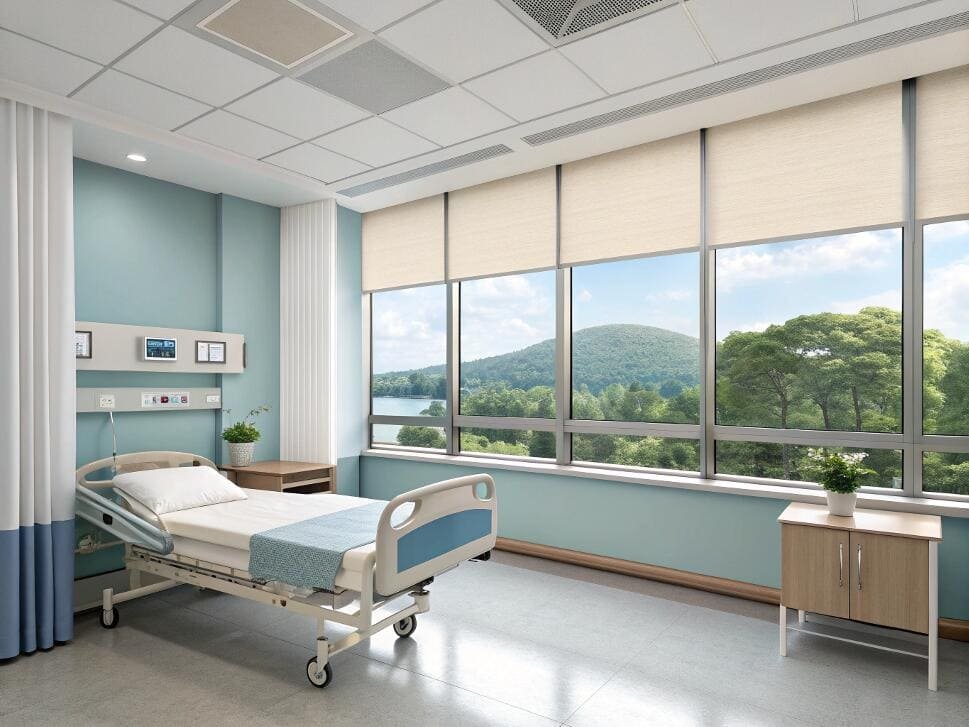
When I work with contractors on LEED-certified projects, honeycomb shades[^8] are a frequent choice. Their unique cellular structure traps air, creating an insulating barrier that can lower annual air conditioning costs significantly. They are a true workhorse for energy efficiency. For many modern offices, however, the aesthetic leans towards minimalism. That's where roller shades excel. We can specify them with a 1-5% openness factor[^9] solar fabric. This cuts glare on computer screens while preserving the outside view. Paired with motorization, they can be automated to adjust based on the sun's position. This maximizes natural light and minimizes energy use throughout the day. This combination of performance and sleek design is what makes them a go-to for today's top commercial spaces.
What fabrics meet safety standards for hotels and restaurants?
A fire in a public space like a hotel or restaurant is a nightmare scenario. Using non-compliant fabrics puts lives and your project at risk. Specifying the right material is essential.
For hotels and restaurants, fabrics must meet the NFPA 701[^10] flame-retardancy standard. This is a crucial safety requirement. Look for materials like treated polyester or fiberglass that explicitly list NFPA 701 compliance in their technical specifications to ensure safety and pass inspections.

I can't stress this enough: for any public-facing project, especially in hospitality, fire safety is non-negotiable. The NFPA 701 test is the standard in the United States to ensure a fabric will resist ignition and self-extinguish. When a client asks for a solution for hotel guest rooms, I often recommend a dual-shade system. This combines a decorative light-filtering roller shade for daytime privacy with a separate blackout roller shade for sleeping. Both fabrics must be NFPA 701 compliant. This layered approach provides complete light control and meets safety codes[^11]. It also does this without needing a large, bulky headrail, which is great for maintaining the clean, modern aesthetic that hotel guests appreciate.
How do you specify sanitary blinds for healthcare facilities?
Healthcare environments demand the highest hygiene standards[^12]. Traditional blinds can trap dust and bacteria, creating a health risk. There are materials and systems designed specifically for these sterile spaces.
For healthcare facilities, specify blinds made from PVC-free, anti-microbial fabrics[^13]. These materials often have a special coating that inhibits the growth of common bacteria. Also, consider systems with easy-to-clean features, like magnetic headrails, to simplify maintenance for staff.
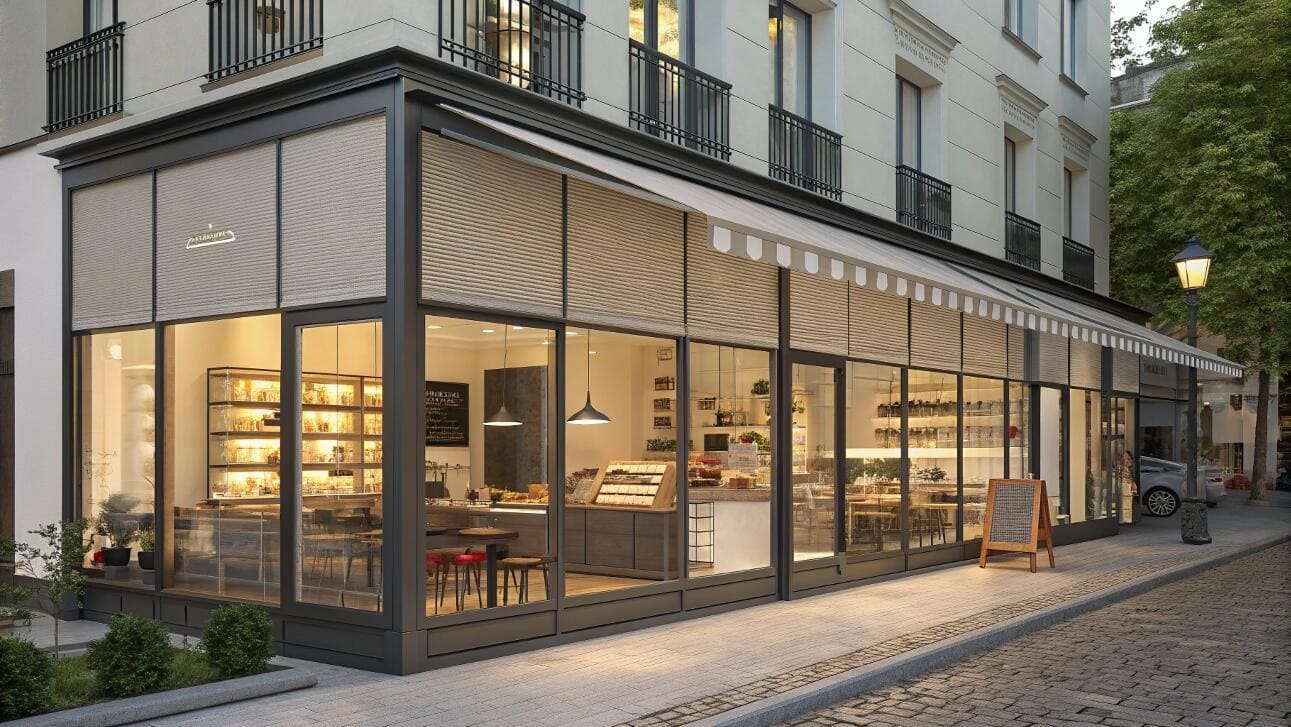
In spaces like hospitals, clinics, and labs, infection control is paramount. Standard window treatments are simply not an option. From my experience, the best solutions start with the fabric. We provide PVC-free materials with a nano-coating that makes them both anti-microbial and easy to wipe down. This prevents the buildup of harmful pathogens. But the system itself also matters. I recently worked on a project where we used roller shades with a special magnetic mounting system. This allowed the maintenance staff to easily detach the entire shade for thorough cleaning, which is much more effective than trying to clean it in place. It's a small detail that makes a huge difference in maintaining a sterile environment.
How can retail storefronts get UV protection without hiding merchandise?
Sunlight streaming through a storefront window can fade expensive merchandise, costing you money. But blocking the window entirely kills your display. There's a way to protect products while inviting customers in.
To protect merchandise from UV damage without losing visibility, use solar roller shades[^14] with a low openness factor of 1-3%. These specially designed fabrics can block up to 97% of harmful UV rays while still allowing customers to see the products on display.
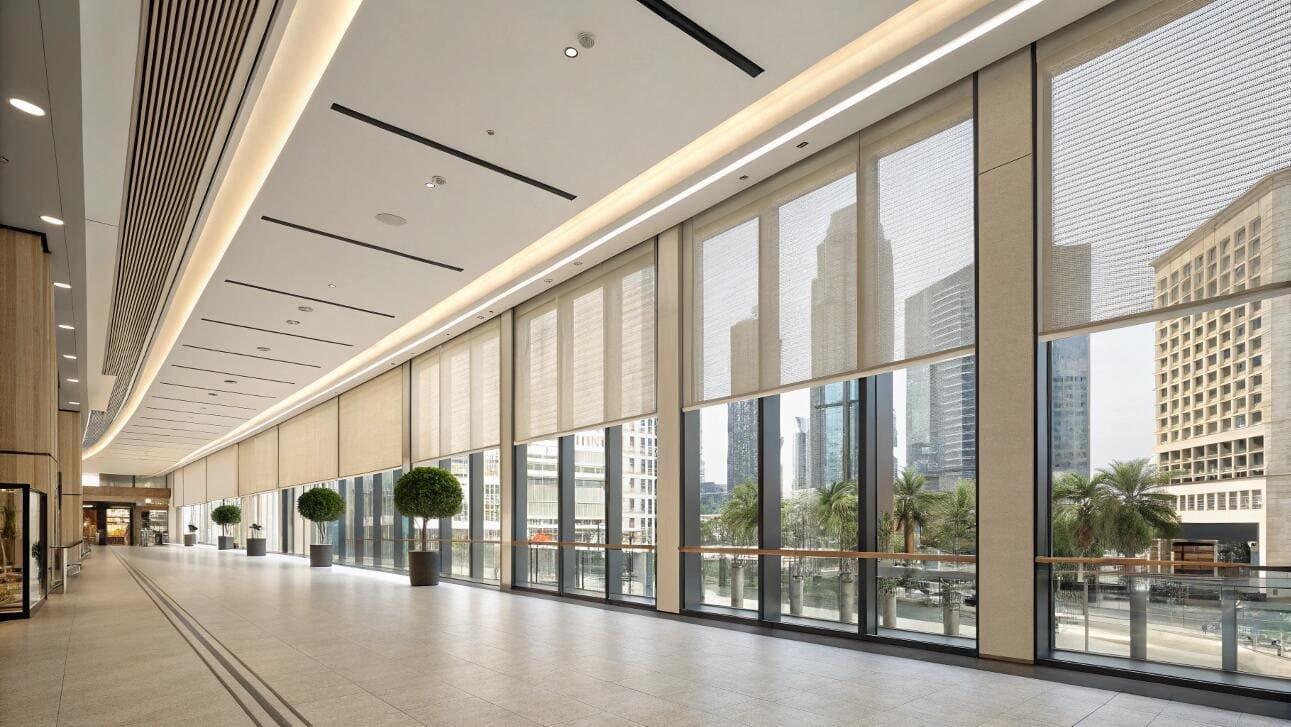
I remember a high-end boutique owner telling me how the color on her display handbags was fading after just a few weeks. It's a common and costly problem. The solution is managing the light, not blocking it completely. Solar shades are the perfect tool for this. The "openness factor" refers to how tight the fabric weave is. For a retail storefront, a 1% or 3% openness is ideal. This weave is tight enough to block the vast majority of UV radiation, preserving the color and life of your products. Yet, it remains sheer enough for shoppers on the street to see your beautiful displays clearly. It's about finding that perfect balance between protection and presentation.
For multi-use complexes[^15], is a single supplier or multi-vendor strategy better?
Managing a large, multi-use project is complex, and sourcing from many vendors adds risk and inconsistency. But can one supplier handle everything? A smart procurement strategy simplifies this entire process.
For large multi-use complexes, a single, capable supplier is almost always better. It ensures design and quality consistency, simplifies communication, and can often lead to better volume pricing[^16] and streamlined logistics[^17]. A multi-vendor approach risks inconsistent products and complicated coordination.

I’ve seen project managers get overwhelmed trying to coordinate multiple blind suppliers for one large complex. The office space gets one type of blind, the residential units another, and the retail a third. The result is often a visual mismatch and a logistical headache. My advice for large projects is to consolidate. By working with a single core OEM supplier like us, you guarantee that the quality, color, and operational feel are consistent throughout the property. This builds a cohesive, high-end identity for the complex. We then work with a network of certified local contractors for installation. This "core brand + local installation" model gives you the best of both worlds: unified product quality from a global source and expert on-the-ground support, often trimming the overall project timeline by up to 20%.
Conclusion
Choosing the right window treatments is about matching technology and material to the building's purpose. This ensures safety, performance, and long-term value for any commercial project you undertake.
---
[^1]: Explore how energy-efficient window treatments can reduce costs and improve comfort in commercial spaces.
[^2]: Learn about the critical role of fire retardancy in ensuring safety in hospitality environments.
[^3]: Learn about the impact of window treatment choices on client satisfaction and project success.
[^4]: Understand the importance of light control in enhancing comfort and productivity in offices.
[^5]: Find out which window treatments can effectively provide privacy while maintaining aesthetics.
[^6]: Learn how proper insulation through window treatments can lead to significant energy savings.
[^7]: Stay updated on the latest design trends that enhance the visual appeal of commercial spaces.
[^8]: Explore how honeycomb shades can significantly reduce energy costs in commercial settings.
[^9]: Learn how the openness factor affects light control and UV protection in window treatments.
[^10]: Learn about NFPA 701 compliance and its significance in ensuring fire safety in public spaces.
[^11]: Understand the essential safety codes that must be adhered to in commercial window treatment projects.
[^12]: Discover essential hygiene practices for window treatments in healthcare facilities to ensure patient safety.
[^13]: Find out which anti-microbial fabrics are ideal for maintaining hygiene in healthcare environments.
[^14]: Understand how solar roller shades can shield products from UV damage while maintaining visibility.
[^15]: Discover the benefits of consolidating suppliers for consistency and efficiency in large projects.
[^16]: Explore how volume pricing can lead to significant savings in large-scale window treatment projects.
[^17]: Learn effective logistics strategies to streamline the installation process for window treatments.Partner with VelaBlinds for Your Next Project
Smart window treatments shouldn't be complicated. After working with 500+ distributors and contractors worldwide, I've streamlined the process to get you quality products, competitive pricing, and reliable support - every time.
Why project professionals choose VelaBlinds:
- ✅ Fast, Accurate Quotes - Detailed specs and pricing within 24 hours
- ✅ Transparent Pricing - No hidden fees, volume discounts clearly outlined
- ✅ Quality Assurance - Direct partnerships with certified OEM manufacturers
- ✅ Project Support - Dedicated account manager from quote to delivery
Start your next project:
📧 Quick Quote: Send your requirements to info@velablinds.com
📱 Direct Contact: WhatsApp +86 137 2012 8317
🌐 Browse Solutions: https://velablinds.com/
📁 Product Resources: Access spec sheets, catalogs & project files
Paul Chen, Founder
"I built VelaBlinds to solve the real challenges I faced as a project buyer - long lead times, unclear specs, and unreliable suppliers. Let's discuss how we can power your projects with smarter blinds."
Serving distributors and contractors across North America, Europe, and Australia since 2018.

